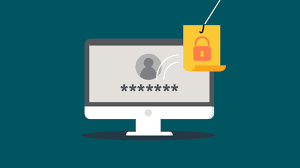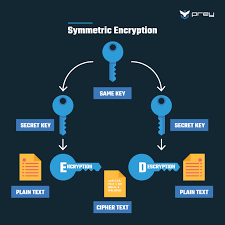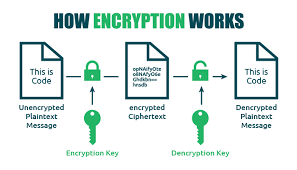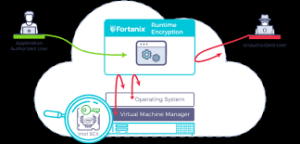1. E-Commerce Scams

Trend Details
- 11,665 cases in 2024
- 19.23% increase from 2023
- Total losses: $17.5 million
- Average loss: $1,508 per case
Notable Example
A scammer named Foo Mei Qi:
- Defrauded 76 victims of $110,700 through fake Taylor Swift concert tickets
- Sold counterfeit tickets totalling $7,780
- Operated primarily on Carousell

Prevention Methods
- Never make payments before receiving items
- Be extra cautious on messaging platforms like Telegram
- Verify seller credentials thoroughly
- Be sceptical of deals for high-demand, sold-out items
- Use secure payment methods with buyer protection
- Meet sellers in safe, public locations for transactions
- Check the seller’s profile, reviews, and transaction history

2. Job Scams
Trend Details
- 9,043 cases in 2024
- 8.79% decrease from 2023
- Total losses: $156.2 million
- Average loss: $17,281 per case

Typical Scam Mechanism
- Initial contact via WhatsApp or Telegram
- Offer of high-paying remote work
- Start with simple tasks like surveys or reviews
- Gradually request money transfers for “job opportunities.”
- Eventually, stop communication or prevent commission payouts

Prevention Methods
- Never pay money to get a job
- Be wary of unsolicited job offers
- Research the company thoroughly
- Check job listings through official channels
- Avoid roles requiring upfront personal investment
- Verify company contact information
- Be sceptical of jobs promising unusually high commissions
3. Phishing Scams

Trend Details
- 8,552 cases in 2024
- 44.02% increase from 2023
- Total losses: $59.4 million
- Average loss: Nearly $2,994
- Majority of victims (42.2%) aged 30-49

Notable Example
- One victim lost $33.8 million in cryptocurrency
- Scammer used a fake advertisement on a legitimate crypto wallet app
- Victim redirected to a convincing fake website
- Credentials stolen, unauthorized transactions made
Prevention Methods

- Maintain healthy skepticism about online offers
- Carefully check website URLs
- Look for subtle differences in website design
- Never click on suspicious links
- Use two-factor authentication
- Keep software and security systems updated
- Be cautious about providing login credentials
- Verify website authenticity before entering personal information

4. Investment Scams

Trend Details
- 6,814 cases in 2024
- 69.08% increase from 2023
- Total losses: $320.7 million
- Primarily targets individuals 50 and above
Typical Scam Mechanism
- Unsolicited addition to WhatsApp/Telegram investment groups
- Fake screenshots of “earnings”
- Promises of high, low-risk returns
- Victims transfer funds
- Unable to withdraw supposed “earnings”

Prevention Methods
- Invest only what you can afford to lose
- Conduct thorough due diligence
- Verify investment opportunities
- Consult financial advisors
- Be skeptical of guaranteed high returns
- Check regulatory compliance of investment platforms
- Avoid unsolicited investment advice
- Research investment companies independently

5. Fake Friend Call Scams

Trend Details

- 4,179 cases in 2024
- 39.07% decrease from 2023
Typical Scam Mechanism
- Unsolicited call from unknown number
- Scammer pretends to be a friend
- Requests financial help
- Victim transfers money to unknown account
Prevention Methods

- Do not engage with unrecognized numbers
- Verify caller’s identity through known contact methods
- Call back using a verified number
- Be cautious of urgent financial requests
- Confirm with the supposed friend through another communication channel
General Scam Prevention Tips
- Trust your instincts
- If an offer seems too good to be true, it probably is
- Keep personal and financial information confidential
- Stay informed about latest scam techniques
- Report suspicious activities to authorities
- Educate family members, especially older relatives
- Use secure, updated technology
- Maintain a healthy level of skepticism online

.
Identity Theft
Identity theft is a pervasive form of fraud that can have devastating consequences for victims. In this crime, the perpetrator steals an individual’s personal information to assume their identity. This stolen information can often be gathered from discarded documents such as bank statements, utility bills, or even phishing scams.
Once armed with this data, the criminal may choose to open accounts in the victim’s name, a process known as application fraud. They might apply for credit cards, loans, or utility services under pretences, leaving the unsuspecting victim to deal with the aftermath.
The emotional toll of identity theft can be immense. Victims often face financial losses and damage to their credit scores, which can take years. In today’s digital age, account takeovers have become a prevalent threat to unsuspecting victims. Criminals typically employ tactics such as phishing, vishing, or smishing to manipulate individuals into revealing their personal information.

Phishing often involves deceptive emails that appear to come from legitimate sources. These emails may prompt the victim to click on malicious links or provide sensitive details under the guise of verifying their identity.
Vishing, or voice phishing, involves phone calls in which scammers impersonate bank representatives or trusted entities to extract confidential information directly from the victim. Similarly, smishing involves text messages that lure individuals into divulging critical data.
Once armed with this personal information, the criminal can easily convince a bank to change the account holder’s address. This deception allows them full access to the victim’s financial accounts and resources.

Additionally, some criminals are skilled enough to bypass bank interaction altogether. They can use the obtained credentials to log into online accounts directly, executing unauthorised transactions without needing any further verification.
The consequences for victims can be devastating, leading not only to financial loss but also emotional distress as they recover their stolen identities and secure their accounts. Consequently, individuals must remain vigilant and understand these risks to protect themselves against potential account takeovers for repair. Additionally, they may find themselves tangled in legal disputes as they try to prove their innocence.

Recovering from such a violation requires diligence and time, making it crucial for individuals to safeguard their personal information vigilantly. Implementing measures like shredding sensitive documents and monitoring credit reports can help prevent these types of crimes before they occur.
Maxthon
Maxthon has set out on an ambitious journey aimed at significantly bolstering the security of web applications, fueled by a resolute commitment to safeguarding users and their confidential data. At the heart of this initiative lies a collection of sophisticated encryption protocols, which act as a robust barrier for the information exchanged between individuals and various online services. Every interaction—be it the sharing of passwords or personal information—is protected within these encrypted channels, effectively preventing unauthorised access attempts from intruders.
 This meticulous emphasis on encryption marks merely the initial phase of Maxthon’s extensive security framework. Acknowledging that cyber threats are constantly evolving, Maxthon adopts a forward-thinking approach to user protection. The browser is engineered to adapt to emerging challenges, incorporating regular updates that promptly address any vulnerabilities that may surface. Users are strongly encouraged to activate automatic updates as part of their cybersecurity regimen, ensuring they can seamlessly take advantage of the latest fixes without any hassle.
This meticulous emphasis on encryption marks merely the initial phase of Maxthon’s extensive security framework. Acknowledging that cyber threats are constantly evolving, Maxthon adopts a forward-thinking approach to user protection. The browser is engineered to adapt to emerging challenges, incorporating regular updates that promptly address any vulnerabilities that may surface. Users are strongly encouraged to activate automatic updates as part of their cybersecurity regimen, ensuring they can seamlessly take advantage of the latest fixes without any hassle.
In today’s rapidly changing digital environment, Maxthon’s unwavering commitment to ongoing security enhancement signifies not only its responsibility toward users but also its firm dedication to nurturing trust in online engagements. With each new update rolled out, users can navigate the web with peace of mind, assured that their information is continuously safeguarded against ever-emerging threats lurking in cyberspace.







